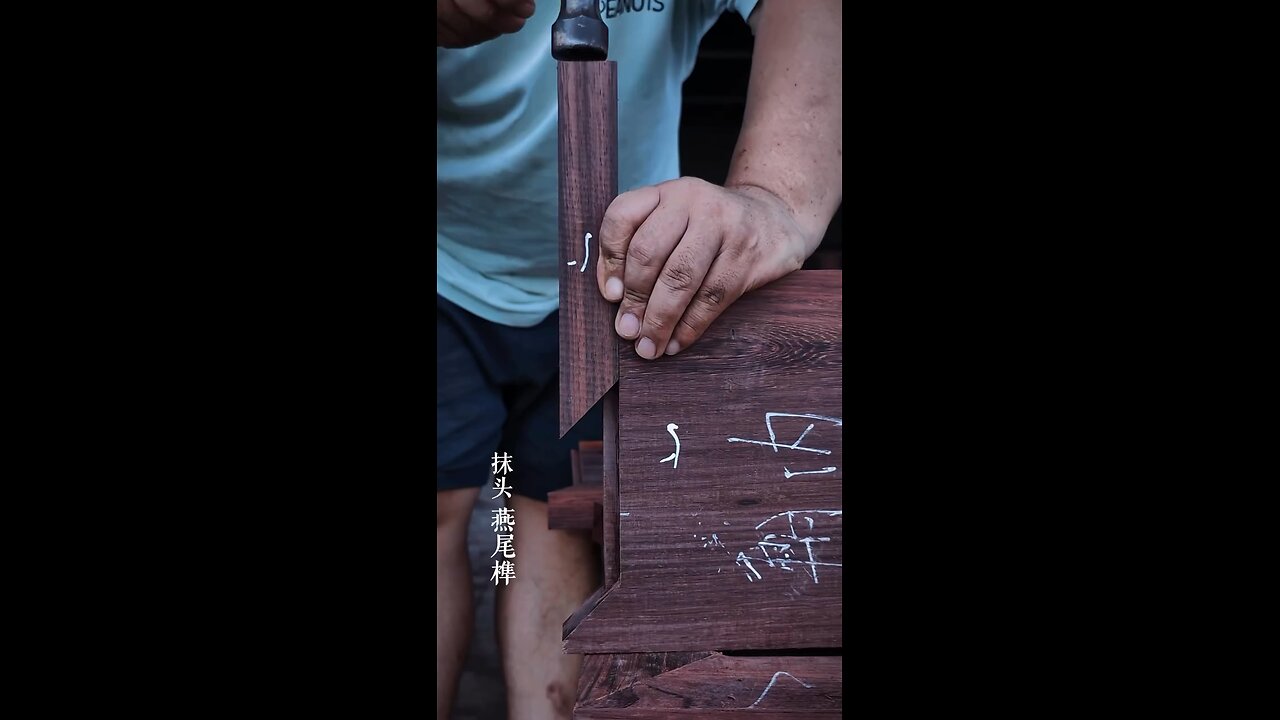Premium Only Content

How Japanese Table Joinery Is Done
In traditional Japanese woodworking, furniture is often joined without screws or nails through a technique called joinery, which involves using precise, interlocking wooden joints. These joints rely on the wood's natural strength, the craftsmanship, and the materials to hold the structure together. Here are some key techniques used:
1. Dovetail Joints (Kiwari-iri)
These are interlocking joints where the ends of two pieces of wood are shaped into wedge-like projections (called tails) and corresponding slots (called pins), creating a strong, durable connection.
Common in drawer construction and small furniture pieces, dovetail joints resist pulling apart, making them ideal for tight-fitting connections.
2. Mortise and Tenon Joints (Ho-iro-no-tsugi)
One of the most fundamental joinery methods. In this technique, one piece of wood (the tenon) fits precisely into a cavity (the mortise) in another piece of wood.
These joints are often used in structural furniture, such as in the framework of tables or chairs.
3. Lapped Joints (Kake-iri)
In lapped joints, two pieces of wood are overlaid and then interlocked, often with a slight bevel on the edges. This allows the pieces to fit snugly together.
Sometimes, the ends of the pieces are shaped to form a stronger bond, increasing the joint's stability.
4. Tusk Tenon Joints (Kakebi)
A variation of the mortise and tenon, where a projecting tenon (with a rectangular or square shape) is inserted into the mortise and held in place by a pin or peg.
5. Japanese Wooden Pegs (Sujigake)
In some cases, after creating a joint, small wooden pegs are driven through both pieces of wood to secure them in place.
These pegs are often used in combination with other joinery techniques, like mortise and tenon, and can be a decorative feature.
6. Kanawa or Sliding Dovetail
This joint involves one piece of wood sliding into a matching channel or groove in the other piece. It's often used for drawer assemblies and certain types of paneling.
7. Shaped Joints
Sometimes, Japanese furniture may feature custom-shaped joints where the edges of the wood are intricately carved to create a strong bond without additional fastening materials.
These joinery methods are designed not only to provide strong, durable furniture but also to highlight the natural beauty of the wood grain and the craftsmanship. Japanese joinery is often seen in traditional furniture such as tatami mats, chests (tansu), and futons. Additionally, many of these techniques don't require glue, as the interlocking nature of the joints holds the pieces together through tension and friction.
The skill of traditional Japanese carpenters has been passed down for centuries, and it is a significant part of Japan's cultural heritage.
-
 LIVE
LIVE
SpartakusLIVE
1 hour agoFriday Night HYPE w/ YOUR King of Content
151 watching -
 LIVE
LIVE
Blabs Life
45 minutes agoPeter Jackson's King Kong: The Official Game of the Movie | Noob Plays
67 watching -
 LIVE
LIVE
sim_n_shift
1 hour agoARC Raiders: Dropping Into the Chaos
76 watching -
 1:19:28
1:19:28
Kim Iversen
3 hours agoNetanyahu Reveals Yep, Epstein Worked For Israel
11.9K51 -
 1:55:00
1:55:00
Roseanne Barr
3 hours agoJovan Pulitzer Is Back! | The Roseanne Barr Podcast #124
168K91 -
 1:35:41
1:35:41
vivafrei
5 hours agoDemonizing Nick Fuentes into the Mainstream! Live with Jake Lang! Miranda Divine Guest & MORE!
73.8K72 -
 5:13
5:13
Buddy Brown
8 hours ago $4.07 earnedMuslim PATROL CARS Begin Monitoring NYC! | Buddy Brown
13.3K33 -
 12:54
12:54
MetatronGaming
4 hours agoYou Remember Super Mario WRONG and I can Prove it
20.1K7 -
 1:02:55
1:02:55
Russell Brand
5 hours agoThe Epstein Files Are Coming — And The Establishment Is Terrified! - SF653
95.3K14 -
 32:47
32:47
The White House
5 hours agoPresident Trump Meets with Zohran Mamdani, Mayor-Elect, New York City
34.2K82